Code-making panel (CMP)-15 has purview over Articles 517, 518, 520, 522, 525, 530, and 540, so they are all Chapter 5, Special Occupancies, articles. The makeup of the panel is unique. In addition to the standard representation, the membership includes representation from the health care industry and the motion picture and theater industry.
As with the other seventeen code-making panels, CMP-15 also moved all definitions to Article 100 and revised Informational Notes to meet the NEC Style Manual. As you can imagine, except for Article 518, all the CMP-15 articles had definitions, and there was significant discussion regarding moving them all to Article 100 during both the First and Second Draft stages.
Article 517
In reviewing the highlights of the CMP-15 significant changes for the 2023 NEC, we will start with Article 517. The first change was completing the phased approach of changing the references from critical, general, basic and support spaces to the risk-based Category 1, 2, 3 and 4 Spaces (see photo 1). This was essentially the same approach that CMP-18 took with changing “light fixtures” to “luminaires.” With just the risk-based category spaces left now, the 2023 NEC will align with NFPA 99, the Health Care Facility Code.
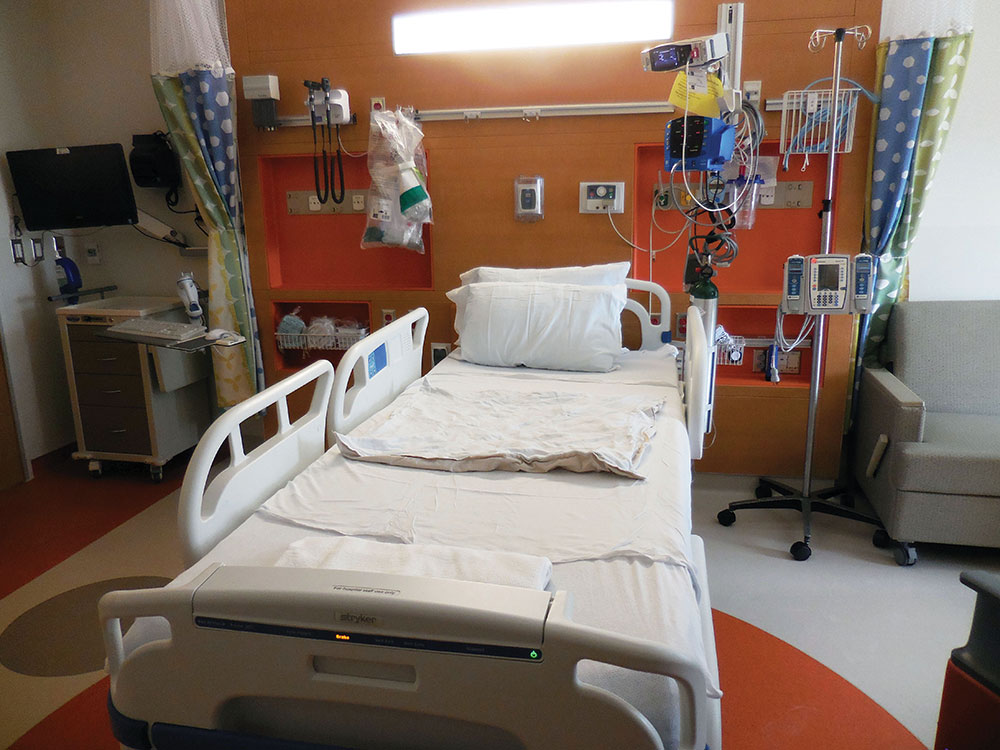
Stay tuned for the 2026 NEC cycle as there is some discussion about taking a similar approach with Article 517 in general. Instead of naming facilities, (i.e. hospitals, nursing homes, limited care facilities and other health care facilities), the electrical system requirements would be based on the type of care provided in any given facility. In my opinion, this type of change to Article 517 would go a long way in relieving the difficulties encountered when determining the differences between health care facilities (e.g., limited care facilities and nursing homes).
A new 517.6 gives requirements about patient care-related reconditioned equipment (see figure 1). The marking and labeling requirements of 110.21(A)(2) and other restrictions on the use of reconditioned equipment will not apply to electrical equipment used in patient care-related activities. Patient care-related electrical equipment is different from the other electrical equipment as it will be reconditioned or recertified in accordance with U.S. Federal Food, Drug and Cosmetic Act (FDCA) when relocated. Health care facilities have used this type of reconditioned equipment for many years without any record of failure, and it is imperative that they maintain the ability to do so.
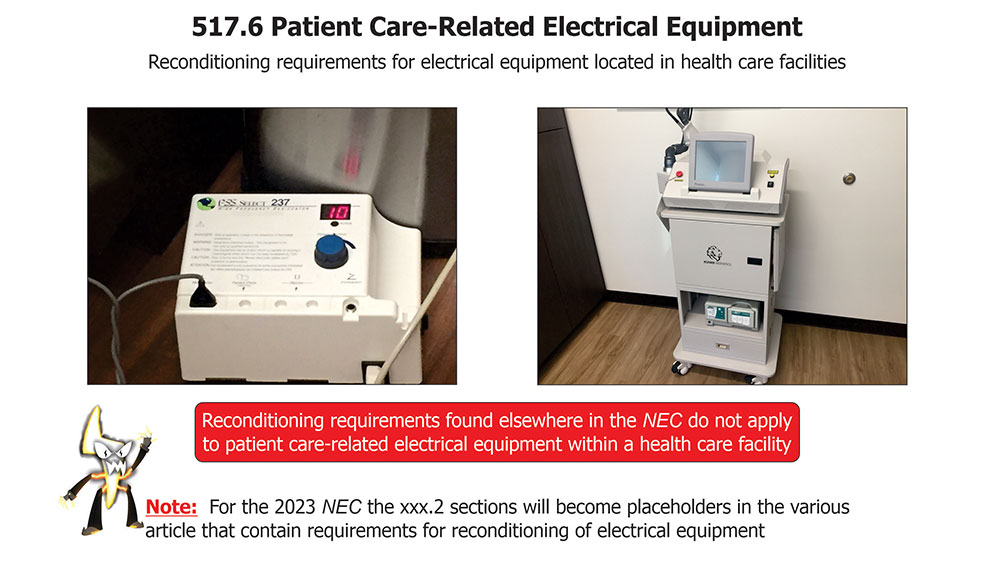
The next change we are going to discuss is in 517.13. This change was necessary to clarify the connection of the equipment-grounding conductor for receptacles and fixed electrical equipment in patient care spaces (see figure 2). By relocating former Exception No. 2 to 517.13(B) for luminaires more than 2.3 m (6-1/2 ft.) above the floor and switches outside the patient care vicinity, to follow the opening paragraph, it will be clear the wiring methods must comply with 517.13(A) and (B) unless the conditions of the exception are met. Section 517.13(A) requires the wiring method itself to be considered as an equipment ground (i.e., meeting 250.118), and 517.13(B) requires the electrical equipment to be connected to an insulated equipment grounding conductor. If the conditions of the exception are met, the equipment grounding return path can be by either 517.13(A) or 517.13(B).
Additionally, the words “wiring in patient care spaces” in the opening paragraph of 517.13 were changed to “wiring serving patient care spaces.” As previously worded, the requirements literally only applied to the part of the branch circuit that was “in” the patient care space. For the safety of staff and patients, it must be clear the equipment grounding conductor return path requirements of 517.13(A) and (B) are enforced for the entire circuit.
Next, let’s review the addition of 517.22 regarding demand factors for general-purpose receptacle loads in Category 1, 2, 3, and 4 spaces. During the 2014 NEC cycle, the number of general-purpose receptacles required in patient care spaces essentially doubled, with operating rooms requiring a minimum of 36 receptacles. This change was made to align with the requirements of NFPA 99, the Health Facility Code, which provides a greater variety of locations to supply cord- and plug-connected, patient-related electrical equipment. Therefore, not all the receptacles will be used at the same time (see photo 2).
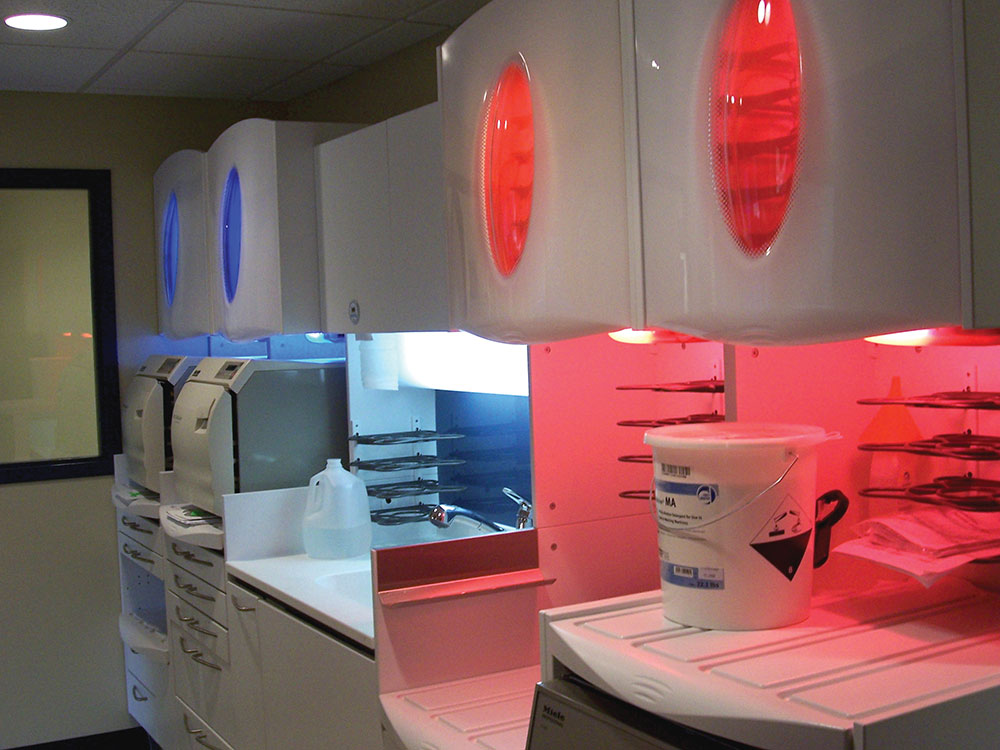
Without the ability to apply demand factors to the receptacle load calculations required by Article 220, unnecessarily large feeders to branch circuit panelboards supplying patient care areas resulted. To provide relief to this situation, 517.22 was added to provide a reference to 220.48, Receptacle Loads – Health Care Facilities. Section 220.48 was the work of a task group with members from CMP 2 and CMP 15. The result of the task group’s work was Table 220.48(1), Demand Factors for Receptacles Supplied by General-Purpose Branch Circuits in Category 1 and Category 2 Patient Care Spaces, and Table 220.48(2), Demand Factors for Receptacles Supplied by General-Purpose Branch Circuits in Category 3 and Category 4 Patient Care Spaces.
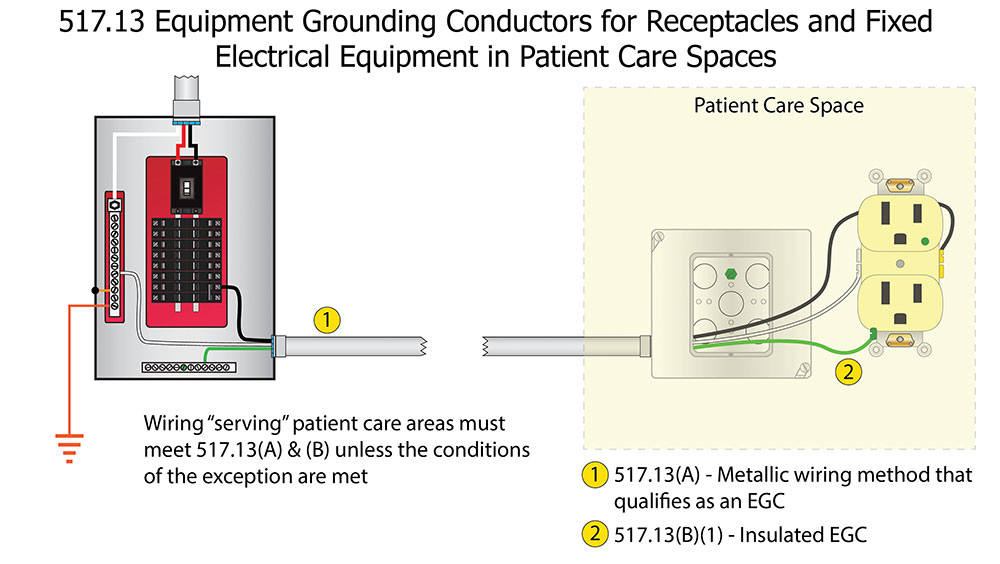
When it was all said and done, a new Part VI, titled “Health Care Facilities,” was added to Article 220. Section 220.110 provides the demand factors of Table 220.110(1), and Table 220.110(2) can be applied to receptacles supplied by branch circuits not exceeding 150 volts to ground. Table 220.110(1) applies to Category 1 and 2 patient care spaces and permits the first 5,000 VA or less to be taken at 100%, from 5,001 to 10,000 VA to be taken at 50%, and the remainder over 10,000 VA to be taken at 25%. Table 220.110(2) applies to Category 3 and 4 patient care spaces and permits the first 10,000 VA or less to be taken at 100% and the remainder over 10,000 VA to be taken at 50%.
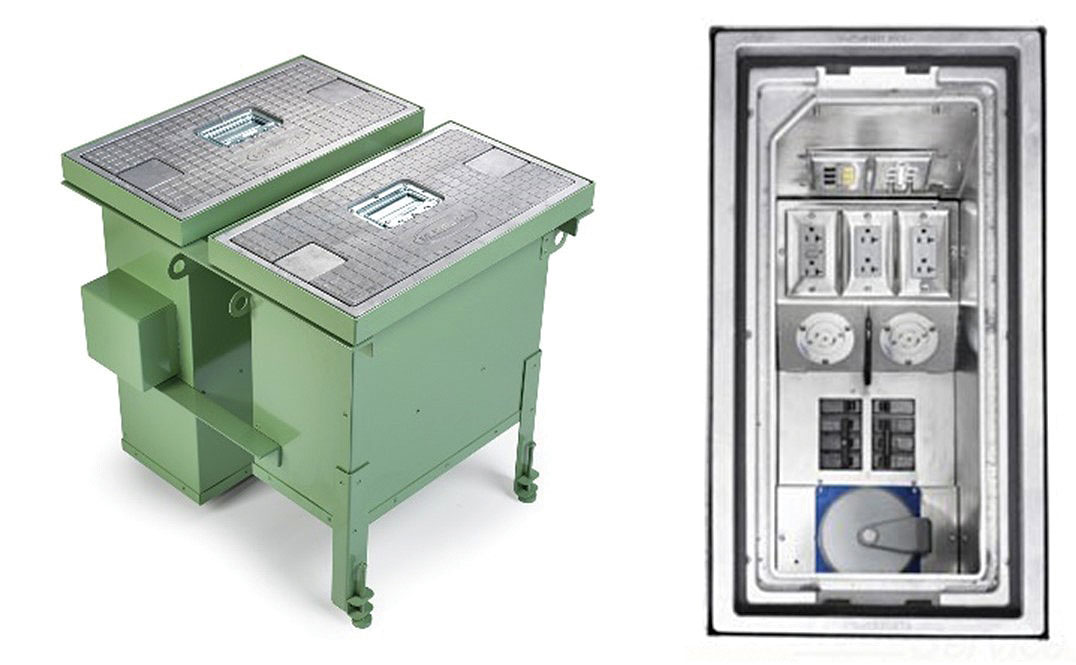
The next change we will look at is the revision to the title and applicable text of Part V of Article 517, which has been changed from “X-Ray Installations” to “Diagnostic Imagining and Treatment Equipment” (see figure 3). The previous title and applicable text did not adequately distinguish between x-ray equipment and other modalities for diagnostic imagining. More and more these days non-x-ray diagnostic equipment is becoming the industry norm, so the NEC needed to better define these needs.
Article 518
So, let’s move out of Article 517 and into Article 518. The first change we review will be the addition of casinos and gaming facilities to the list of assembly occupancy examples at the beginning of Article 518. Although, technically, these types of facilities were already included under the general heading of “assembly occupancies” this change will make it clear they are covered by the article. The substantiation that led to the change was simply that casinos and gaming facilities are assembly occupancies that are more prevalent than some of the assembly occupancies that were already included in the 518.2(A) list of examples. Electrical equipment suitable for exhibition halls is also used in casinos and similar gaming facilities.
The next change we will review in Article 518 is the addition of language to 518.4 that clarifies that Power of Ethernet (PoE) is included and how the section has been revised into list format with two titled subdivisions. The part of the previous opening paragraph, which contained the permitted wiring methods, has been revised into a list format for clarity. A new titled first-level subdivision (B) has been added alert readers to the reference to specific wiring methods (i.e., communications, signaling, data, fire alarm, and systems less than 120 volts). Former list item No. 4 has been revised to recognize wiring methods that supply circuits that transmit power, data, or both to a powered device.
The last change we will review for Article 518 is to 518.5. The former large paragraph, which contained several requirements, was revised in three first-level subdivisions. One of these new subdivisions provides the new requirements for commercial appliance outlet centers, which have unique features such as a panelboard in a face-up position. Because the general requirements for panelboard orientation in 408.43 do not permit mounting of panelboards in a face-up position, it was necessary to permit the orientation for listed commercial appliance outlet centers designed for in-floor mounting (see photo 3).
Article 530
Finally, let’s review the rewrite of Article 530. For many years, equipment and safe practices in Article 530 occupancies did not change in any material way, and thus the wording of Article 530 required little or no change. However, over the past five years, there has been an onslaught of new technology brought to studios and locations (see photo 4 and figure 4). Old technologies have disappeared and been replaced with new technologies that bare directly on the content of Article 530. The rewrite of the article reflects those changes in the entertainment industry.
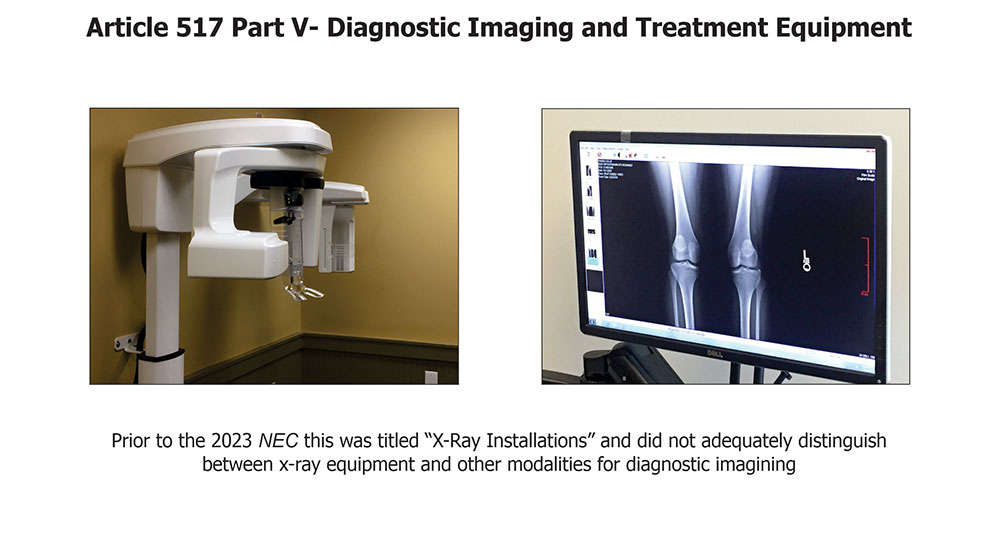
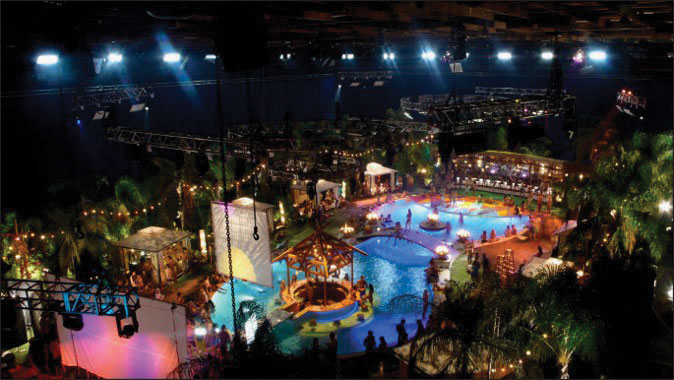
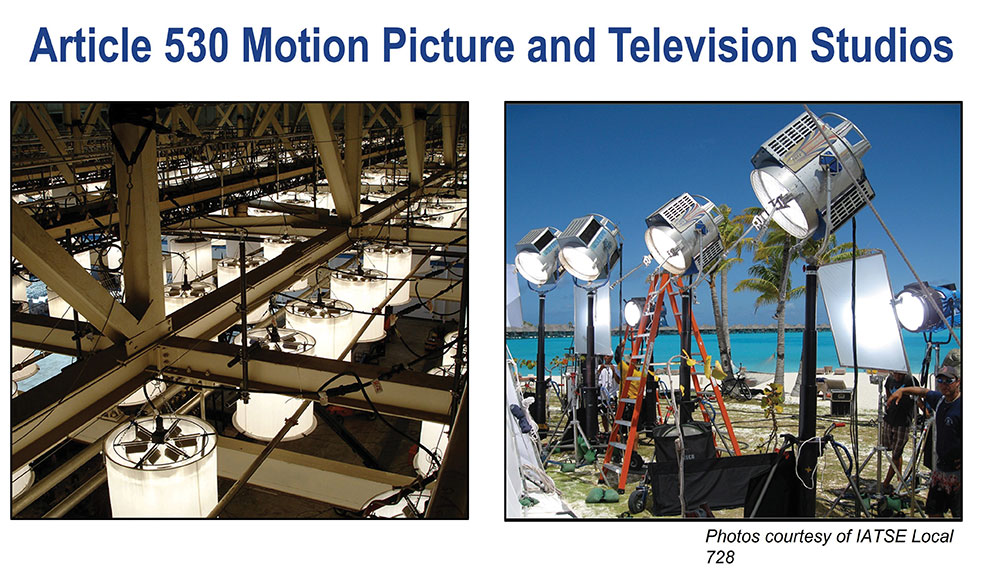
The article’s rewrite resulted from the work of a task group with a broad representation of motion picture producers, labor, supply chain, and users. The scope of the article was revised to acknowledge current safe work practices by stating the requirements of the article apply to motion picture and television studios in facilities and locations staffed by qualified persons.
“Locations” was added to the areas covered by the article as production no longer only occurs in major centers such as Hollywood and New York. It can occur anywhere in the country. The term “location” is defined in Article 100 as a place outside a motion picture studio where production is filmed or recorded.













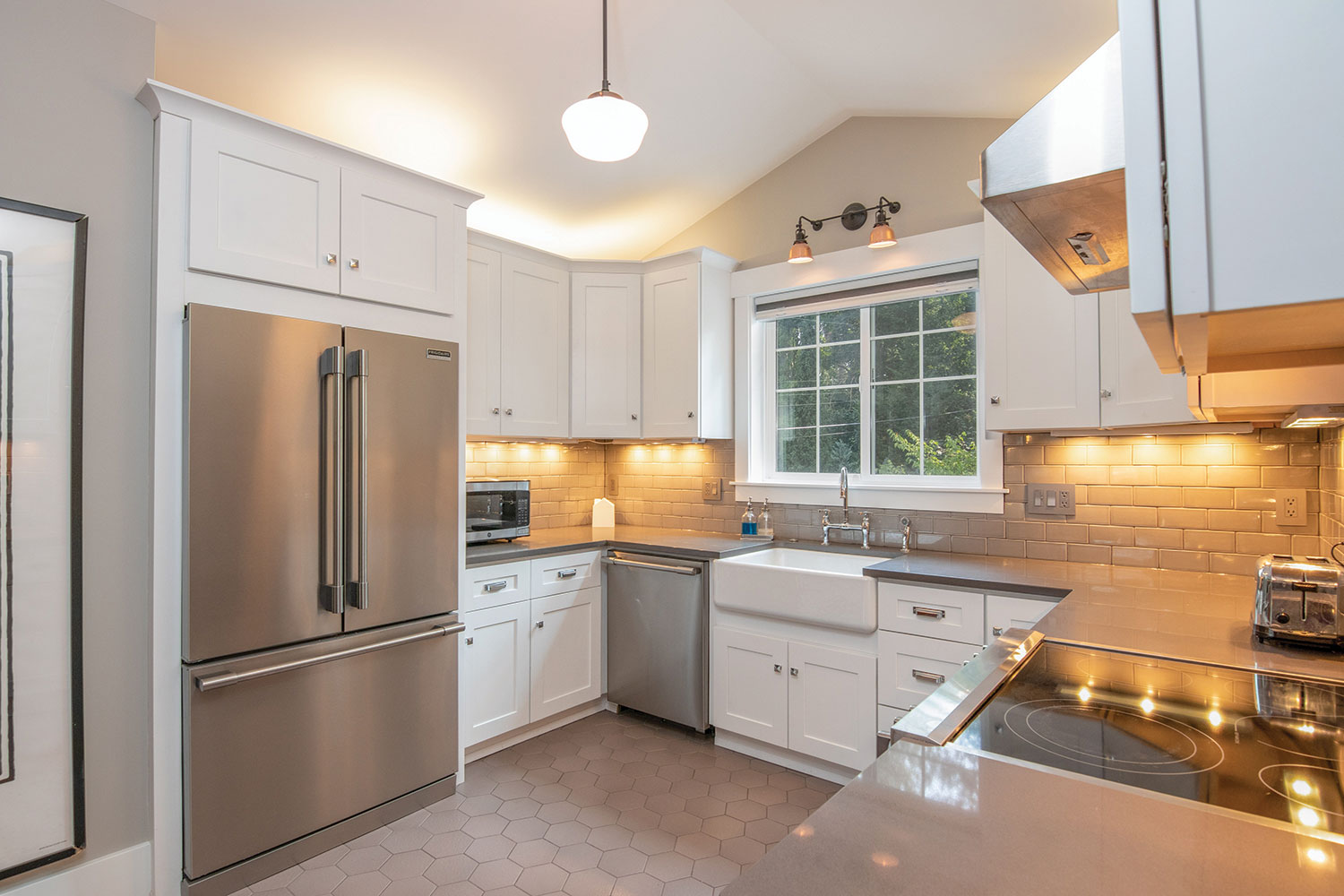

Find Us on Socials